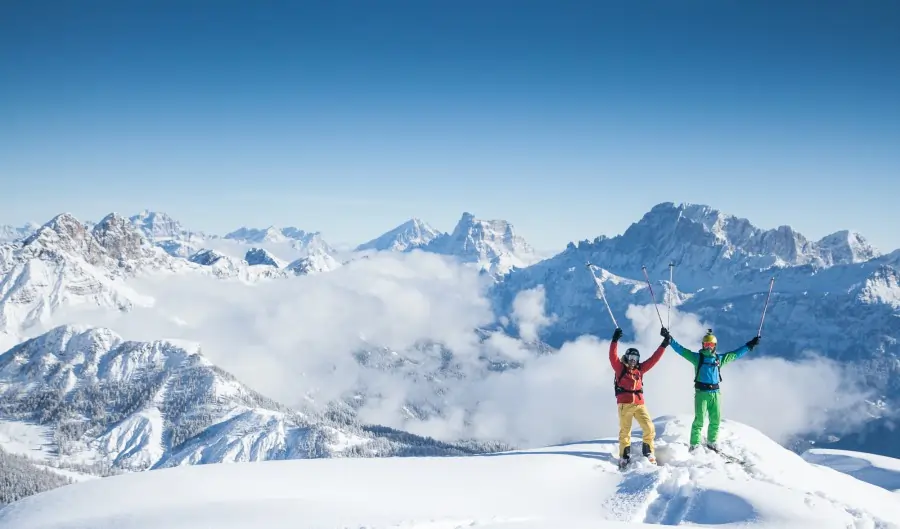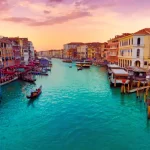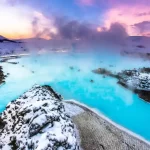It’s the seventh and final day of my week-long ski safari across the Dolomites, and for a fleeting moment, I have the mountain entirely to myself. As I glide along a five-mile run, weaving past frozen waterfalls and towering limestone peaks, the breathtaking landscape feels almost surreal. Other than my guide, there isn’t another skier in sight.
The Dolomites, a UNESCO-recognized mountain range in northern Italy, have long been a favorite among European skiers. However, more North Americans are now discovering the allure of this region, with its vast ski terrain and unique cultural blend. As the future host of the 2026 Winter Olympics, the Dolomites are set to attract even greater attention in the coming years. According to international news updates, the region is already experiencing an influx of visitors eager to explore its slopes before the Olympic crowds arrive.
Cortina d’Ampezzo: The Heart of the 2026 Winter Olympics
Cortina d’Ampezzo is Italy’s most famous ski town and the central hub for the upcoming Winter Olympics. Often compared to Aspen for its blend of luxury and alpine charm, Cortina has been hosting the Women’s World Cup championships since 1993. The town first gained international recognition when it hosted the 1956 Winter Olympics, cementing its reputation as a premier ski destination. Now, 70 years later, Cortina will once again take center stage, co-hosting the Winter Games alongside Milan.
During my ski safari with Dolomite Mountains, an Italian-based outdoor adventure company, I found that the further we traveled beyond Cortina, the more the crowds thinned out. Each day, we skied across fresh terrain, staying in charming rifugios or hotels along the way. While our luggage was transported to our next destination, we experienced different ski resorts, each offering a unique cultural perspective. This diversity in landscapes and experiences makes the Dolomites an exceptional skiing destination, as highlighted in daily news highlights about top travel spots.
One of my most unforgettable runs was the Armentarola piste in Alta Badia, a five-mile descent through the stunning valley of South Tyrol. At the bottom of the run, I encountered a sight unlike anything I had ever seen at a ski resort—a horse-drawn carriage, ready to tow skiers to the next lift for a small fee. This seamless blend of tradition and innovation is what sets the Dolomites apart from other ski destinations.
The World’s Largest Ski Area and a Cultural Mosaic
The Dolomiti Superski pass grants access to the world’s largest interconnected ski area, encompassing 12 resorts, 757 groomed slopes, and 450 lifts. With over 1,200 kilometers (746 miles) of terrain, skiers can explore endlessly without ever repeating the same run. The region is also renowned for its rich cultural tapestry, where Italian, German, and Ladin languages coexist. This cultural fusion is evident in everything from signage to cuisine, providing a truly immersive experience.
“You have the Italian, Austrian, and Ladin cultures all blended in this area,” says Agustina Lagos Marmol, founder of Dolomite Mountains. Raised in Patagonia, she is passionate about preserving the region’s unique mountain heritage. Her company is committed to sustainable tourism, offsetting its environmental impact by supporting conservation projects in Val di Fiemme and the Amazon River basin. By 2030, Dolomite Mountains aims to be a climate-positive company, ensuring that future generations can continue to enjoy this alpine paradise.
Culinary traditions in the Dolomites reflect the region’s diverse influences. In Cortina, skiers can savor casunziei, a signature beetroot ravioli dish. In Val Gardena, where Ladin culture thrives, apple strudel reigns supreme. Meanwhile, in Alto Adige, hearty canederli (bread dumplings) provide the perfect way to warm up after a long day on the slopes. These gastronomic delights are just one of the many reasons why the Dolomites stand out as a top winter destination in international news updates.
Luxury Stays and the Revival of Alpine Traditions
With the Winter Olympics on the horizon, Cortina is witnessing a rise in high-end accommodations. Hotel de LEN, an eco-friendly property inspired by Ladin culture, offers modern comforts and breathtaking views from its rooftop spa. Meanwhile, Hotel La Perla in Alta Badia combines traditional hospitality with contemporary luxury, boasting a Michelin-starred restaurant.
Despite this growing luxury scene, efforts are also underway to revive the region’s alpine traditions. One such initiative is the reintroduction of the historic “snow train,” which was relaunched in 2024 to provide a sustainable travel option from Rome to the Dolomites. This vintage sleeper train, known as the Espresso Cadore, will resume service for the Winter Olympics, offering a nostalgic yet environmentally friendly way to reach Cortina.
The Espresso Cadore operates on weekends, departing from Rome’s Termini Station on Friday nights and arriving in the Dolomites early Saturday morning. A direct coach transfer takes passengers to the heart of Cortina in under an hour. With one-way ticket prices starting at $183 for a shared cabin and $422 for a private cabin, this scenic journey is both an affordable and memorable way to reach the mountains.
For those seeking a more flexible travel option, a standard train ride from Rome to Cortina takes approximately 6.5 to 7.5 hours, with ticket prices ranging from $45 to $135. Alternatively, travelers flying into Venice can arrange a private transfer to Cortina, a service that Dolomite Mountains also facilitates.
A Dolomite Mountains ski safari costs approximately $4,890 per person for a seven-day adventure from Cortina d’Ampezzo to Val Badia (based on six people). Shorter three-day ski safaris are also available, starting at $2,640 per person. Whether you’re looking for a long expedition or a quick getaway, the Dolomites offer a world-class skiing experience with breathtaking scenery, cultural richness, and a touch of alpine nostalgia. With daily news highlights showcasing the region’s growing popularity, now is the perfect time to embark on a ski adventure before the Olympic buzz takes full effect.































